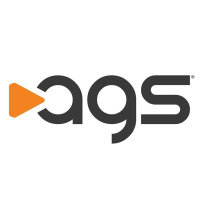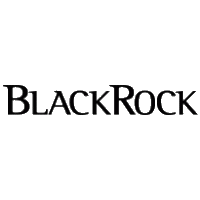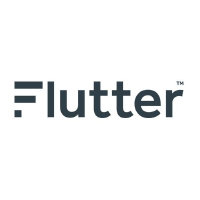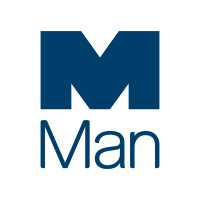
AXIS Capital Holdings Ltd
NYSE:AXS


| US |

|
Bank of America Corp
NYSE:BAC
|
Banking
|
| US |

|
PlayAGS Inc
NYSE:AGS
|
Hotels, Restaurants & Leisure
|
| US |

|
BlackRock Inc
NYSE:BLK
|
Financial Services
|
| US |

|
MGM Resorts International
NYSE:MGM
|
Hotels, Restaurants & Leisure
|
| US |

|
Visa Inc
NYSE:V
|
Technology
|
| US |

|
JPMorgan Chase & Co
NYSE:JPM
|
Banking
|
| US |

|
Citigroup Inc
NYSE:C
|
Banking
|
| US |

|
Penn National Gaming Inc
NASDAQ:PENN
|
Hotels, Restaurants & Leisure
|
| US |

|
PayPal Holdings Inc
NASDAQ:PYPL
|
Technology
|
| US |

|
Coinbase Global Inc
NASDAQ:COIN
|
Financial Services
|
| US |

|
Alphabet Inc
NASDAQ:GOOGL
|
Media
|
| US |

|
Microsoft Corp
NASDAQ:MSFT
|
Technology
|
| US |

|
Amazon.com Inc
NASDAQ:AMZN
|
Retail
|
| US |

|
First Solar Inc
NASDAQ:FSLR
|
Semiconductors
|
| US |

|
Tesla Inc
NASDAQ:TSLA
|
Automobiles
|
| UK |

|
Cadence Minerals PLC
LSE:KDNC
|
Metals & Mining
|
Utilize notes to systematically review your investment decisions. By reflecting on past outcomes, you can discern effective strategies and identify those that underperformed. This continuous feedback loop enables you to adapt and refine your approach, optimizing for future success.
Each note serves as a learning point, offering insights into your decision-making processes. Over time, you'll accumulate a personalized database of knowledge, enhancing your ability to make informed decisions quickly and effectively.
With a comprehensive record of your investment history at your fingertips, you can compare current opportunities against past experiences. This not only bolsters your confidence but also ensures that each decision is grounded in a well-documented rationale.
Do you really want to delete this note?
This action cannot be undone.

| 52 Week Range |
54.121
88.75
|
| Price Target |
|
We'll email you a reminder when the closing price reaches USD.
Choose the stock you wish to monitor with a price alert.

|
Bank of America Corp
NYSE:BAC
|
US |

|
PlayAGS Inc
NYSE:AGS
|
US |

|
BlackRock Inc
NYSE:BLK
|
US |

|
MGM Resorts International
NYSE:MGM
|
US |

|
Visa Inc
NYSE:V
|
US |

|
JPMorgan Chase & Co
NYSE:JPM
|
US |

|
Citigroup Inc
NYSE:C
|
US |

|
Penn National Gaming Inc
NASDAQ:PENN
|
US |

|
PayPal Holdings Inc
NASDAQ:PYPL
|
US |

|
Coinbase Global Inc
NASDAQ:COIN
|
US |

|
Alphabet Inc
NASDAQ:GOOGL
|
US |

|
Microsoft Corp
NASDAQ:MSFT
|
US |

|
Amazon.com Inc
NASDAQ:AMZN
|
US |

|
First Solar Inc
NASDAQ:FSLR
|
US |

|
Tesla Inc
NASDAQ:TSLA
|
US |

|
Cadence Minerals PLC
LSE:KDNC
|
UK |
This alert will be permanently deleted.
 AXIS Capital Holdings Ltd
AXIS Capital Holdings Ltd
Earnings Call Analysis
 Q3-2023 Analysis
AXIS Capital Holdings Ltd
Q3-2023 Analysis
AXIS Capital Holdings Ltd
AXIS delivered a set of strong results for the third quarter, showcasing robust premium growth especially in credit and surety by 31%, in Accident & Health by 9%, and a remarkable 56% growth in Professional Lines led by cyber. These results are part of a broader narrative of exponential growth. They recorded the highest-ever quarterly operating earnings per share at $2.34 with year-to-date earnings per share at $6.90, marking an impressive nine-month performance in the company's history.
Even in the face of substantial weather-related losses, AXIS displayed resilience with their combined ratio improving by 11.6 points over the prior year, due to lower catastrophe and weather-related losses. An overall combined ratio of 92.7% and an improved accident year underwriting income of $144 million underscore AXIS's effective underwriting discipline. Within their insurance business, there was nearly an $89 million improvement in underwriting income, while the company remained ahead of loss costs with overall rate increases of 6%.
AXIS has paid careful attention to long-tail liabilities, adjusting reserves as needed for prudence, especially within their programs and liability business reflected by recent increases in severity due to factors such as social inflation. Management remains vigilant in monitoring risk, anchoring their underwriting on conservative estimations and keenly watching trends in liability and social inflation that could affect their reserves and profitability going forward.
Even after returning $115 million to shareholders through buybacks, AXIS maintains a capital allocation strategy that prioritizes growth, particularly in chosen lines of business. They expressed continued opportunities for growth with a consistent strategy aimed at delivering value to shareholders through an increased book value per share and executing underwriting excellence.
With a targeted approach, AXIS has successfully grown its US casualty business premiums by 36%, coupled with rate increases of 9%, and continued robust performance in their primary casualty business with rate increases of 16%. This momentum underlines the company's ability to capitalize on favorable market conditions as they continue to strengthen their specialty markets worldwide.
A composite view of the third quarter shows a company navigating complexities with agility to achieve strong top and bottom line results—evident from healthy premium growth, improved combined ratios, prudent long-tail liability management, and a strategic focus on specialty markets primed for future growth. AXIS's commitment to targeted growth, underwriting excellence, and vigilant risk management positions them well for continued success in the dynamic insurance landscape.






 You don't have any saved screeners yet
You don't have any saved screeners yet

Hello, and welcome to the Third Quarter 2023 AXIS Capital Earnings Call. [Operator Instructions] Please note this event is being recorded.
I would now like to hand the conference over to your first speaker today, Ms. Miranda Hunter, Head of Investor Relations with AXIS Capital. Please go ahead, ma'am.
Thanks, Chuck. Good morning, and welcome to the AXIS Capital Third Quarter 2023 Conference Call. Our earnings press release and financial supplement were issued yesterday evening after the market closed. If you would like copies, please visit the Investor Information section of our website at axiscapital.com.
Joining me on today's call are Vince Tizzio, our President and CEO; and Pete Vogt, our CFO.
Before we begin, I would like to remind everyone that statements made during this call, including the question-and-answer section, which are not historical facts may be forward-looking statements. Forward-looking statements involve risks, uncertainties and assumptions. Actual events or results may differ materially from those projected in the forward-looking statements due to a variety of factors including the risk factors set forth in the company's most recent report on the Form 10-K or our quarterly report on the Form 10-Q and other reports the company files with the SEC. This includes the additional risks identified in the cautionary note regarding forward-looking statements in our earnings press release issued last night. We undertake no obligation to publicly update or revise any forward-looking statements.
In addition, this presentation may contain non-GAAP financial measures. Reconciliations are included in our earnings press release and financial supplement.
And with that, I turn the call over to Vince.
Thank you, Miranda. Good morning, and thank you for joining us.
In the third quarter, AXIS delivered strong results. During the quarter, we produced record performance, double-digit premium growth, improvements to our operating infrastructure, made investments in talent that complement our team and enhanced our ability to bring new and existing specialty product capabilities to the market.
Key indicators during the quarter include, our highest ever quarterly operating earnings per share at $2.34; year-to-date operating earnings per share of $6.90, which is the strongest 9-month performance in our company's history. Our annualized operating return on equity was 18% for the quarter and 18.4% for the first 9 months of the year.
On the underwriting side, record third quarter overall gross premiums written of $1.9 billion, including $557 million in new business premiums, which was an increase of 21% over the prior year quarter. We produced a healthy combined ratio of 92.7% as we delivered both strong top and bottom line results, even as the industry faced an active quarter for global weather events, with industry-wide losses estimated to exceed $25 billion for the quarter. And this results in a quarterly accident year underwriting income of $144 million.
Turning now to our segments, first, within our Insurance business. We produced close to $1.5 billion in gross premiums written or 11% over the prior year quarter. New business premiums for the quarter were $467 million, also a record for the third quarter and the second highest of any quarter. On the combined ratio, we delivered a very strong result of 88.2% and an ex-cat current accident year combined ratio of 84%.
We generated underwriting income of $105 million, an improvement of $89 million. We produced overall rate increases of 6%, remaining ahead of loss costs, while our portfolio continues to benefit from high double-digit compounded rate over the past few years. Indeed, in all but professional and cyber, we delivered double-digit premium increases. I'll speak more on both of those lines shortly.
Looking deeper within our Insurance businesses, our London-based International business, which includes our Lloyd's syndicate, once again, had a strong quarter, delivering premium growth of nearly 18% driven by a 22% increase in new business. In North America, premiums increased by 12%, with the key driver being our wholesale business, which delivered robust growth of 39% with rate increases of 15% and new business up 53%.
Now looking at a product view, across our insurance business. With respect to property, AXIS continues to see favorable market conditions in each of our platforms. We believe positive conditions will be sustained into 2024 across all of our property lines. We see continued dislocation from standard line markets as well as the effect of changing reinsurance terms and conditions impacting the competitive landscape that's creating increased opportunities on the primary side. For the quarter, across our property lines, we generated premium increases of 33% with rate increases of 16%.
Looking at our individual property businesses. Our wholesale E&S business grew by 87% while achieving rate increases of nearly 25%. Our London open market property book delivered premium growth of 26% with rate increases of 17%. We generated excellent growth within our onshore renewable portfolio with premium increases of 59% and rate improvement of 5%. And in construction, we produced premium growth of 45% with rate improvement of 8%.
In marine, we continued to leverage our broad product capabilities and our position as a recognized market leader. In the quarter, we increased premiums by 20% with low single-digit rate increases. Key growth drivers included renewable energy offshore; marine liability, including war; as well as specie and fine art. In the quarter, we also added capabilities to our already solid platform as we stood up new marine cargo and inland marine units in North America, servicing our dual channels of distribution.
In our overall renewable energy portfolio, where we are a top 5 global player and recognized as an industry thought leader, we see tremendous potential over the medium term. In the quarter, premiums grew by 61% with rate improvements up 4%.
In professional lines, premium production was down 10% with average rate decreases of 5% as we continue to navigate a moderating environment. Consistent with my comments in past calls, a key driver was the reduction of our U.S. public D&O business where pricing remains, in our view, unfavorable as well as the reduction of transactional liability opportunities. At the same time, we are managing diversification across our professional lines book and are pursuing targeted growth opportunities through our lower middle-market private D&O business, and we're encouraged by the growth that we are seeing.
In our cyber business, premiums were down 19% largely due to timing, and rate increases were about 2% in the quarter. The cyber market remains dynamic. And as mentioned in the second quarter, we continue to make adjustments to our small to midsized facilities while pursuing our open market cyber business, which grew 7% in North America.
A word about liability. Liability is the class where we are most particularly seeing the impact of social inflation. Thus, across our liability lines, we've taken a vigilant approach, emphasizing a select underwriting appetite, including terms, limits and other underwriting tools that we employ. In the quarter, we produced growth of 19% and rate increases of 10%. This was driven by targeted growth within our U.S. AXIS casualty business where premiums increased 36% with rate increases up 9%.
In our primary casualty business, we continue to maintain our targeted underwriting strategy achieving rate increases of 16%, with premiums remaining broadly flat.
In summary, we're confident that AXIS is well positioned to capitalize on the favorable market conditions. We see both in the immediate and near to midterm as we lean into our chosen specialty markets worldwide.
Let's now turn to reinsurance. During the quarter, we continued to demonstrate that our repositioning of AXIS Re as a focused, more profitable specialist reinsurer is taking hold. In the quarter, we delivered $448 million in gross premiums written with our best-ever third quarter production for reinsurance, excluding property and catastrophe business. This included $58 million in premium growth, which is up about 15%. We continued the momentum from the prior quarter in achieving strong retention and healthy new business generation of $90 million. We produced a 92.7% combined ratio, a nearly 17 percentage point improvement over the prior year quarter. We generated $42 million in underwriting income as compared to a $45 million loss in the prior year quarter. Rate increases were up 7% and in line with loss cost trends.
As we've previously shared, following our repositioning of AXIS Re as a specialist reinsurer, there was approximately $20 million of expiring multiline or so-called bouquet business at risk in the third quarter. I'm pleased to share that we were able to restructure these renewals and retain the business and growing it to some $30 million. We are encouraged by this result and view it as an additional proof point, illustrating the value that our brokers and clients see in our reinsurance franchise.
Indeed, the recent launch of Monarch Point Re, a new collateralized reinsurer with Stone Point, evidences the confidence in the marketplace for our reinsurance business. Pete will speak further on Monarch Point Re during his remarks.
Now let me provide a few comments on our key contributors by line of business. In Credit and Surety, we produced premium growth of 31% with a 6% rate improvement. In Accident & Health, gross written premiums grew 9% with rate increases of 8%. In professional lines, we generated 56% growth, predominantly driven by cyber. Rate increases for professional lines approximated 5%. The growth of our cyber reinsurance business further demonstrates the versatility of our dual platforms. In liability, we delivered premium growth of 18%. Rate increases were 7.5%, excluding workers' comp. This growth was a result of increased lines, rate and selective new business.
Finally, looking ahead to the 1/1 renewal season, we expect that firming rates and improved terms and conditions will continue into 2024 with a particular need for further improvement in casualty and professional lines. Nonetheless, we feel our brokers and clients know our appetite and our deep service commitment. And therefore, we feel confident that our value proposition is understood and will serve us and our partners well.
Let's now shift gears and talk about the work that we are doing to enhance our operating model. As we shared during prior earnings calls, we've been taking a fresh look at all aspects of our business, and indeed, we're making enhancements. You will recall about a new internal initiative called How We Work. The key objectives are straightforward: increase our agility and speed to market; simplify our operating structure and enhance our ability to leverage data and digital capabilities; and of course, deliver improving efficiencies and capitalize more on productivity gains.
In the 3 months since launching How We Work, we have made advances in simplifying our organizational structures that have resulted in AXIS taking several actions in the third quarter with an associated reorganization expense of $29 million. These actions advance our progress in reducing our annualized run rate expenses. And as Pete has indicated in prior quarters, we remain focused on bringing our expense ratio to the low 30s.
A few examples. We are in the process of restructuring the operating models for our operations and claims functions. In both operations and claims, we are repositioning the operating models to more closely align with our underwriting and business priorities and all the while improving efficiency.
Within operations, this work includes deepening our digital and automation capabilities, streamlining the organization structure and partnering ever more closely with our brokers to add speed to how we intake business submissions and the associated processes.
In claims, this work includes further enhancing our data and analytics and loss trend identification capabilities while further strengthening the linkage between claims, operations, underwriting and actuarial. We've also enhanced our target operating model within our chief underwriting office. This includes the integration of all actuarial functions into the CUO organization. And we are taking a new look at how to even further enhance our reserving, risk modeling and pricing capabilities.
In respect to reserves, our reserving philosophy remains to quickly acknowledge bad news while requiring favorable signals to be consistently demonstrated over an appropriate period, before recognizing good news. As discussed during our second quarter earnings call and as part of How We Work, Pete and I are working closely with our Chief Actuary and new Chief Claims Officer to reexamine our claims and reserving processes. As part of this fresh look and augmenting our normal processes, we are reviewing our portfolio and testing our assumptions, especially in light of the development that we have seen from the soft market years and the continued impact from social and economic inflation, along with other emerging trends seen within the industry. We will complete these additional deep reviews in the fourth quarter, coinciding with our normal internal quarterly review and our annual independent review. Once this work is complete, we will respond in a manner consistent with our philosophy.
In addition, we made a number of talent announcements. This includes both growing from within and adding to our team with new complementary talent.
I'll now take a moment to express my gratitude to our long-time Chief People Officer Noreen McMullan and AXIS Wholesale CEO Carlton Maner who are both retiring at the end of the year as well as to our former Chief Digital Officer, Linda Ventresca who has left AXIS to start a new chapter. We are deeply appreciative to all of our colleagues for their significant contributions to our company.
Finally, I'll note that today, we are launching a brand refresh, a new brand campaign for AXIS called Specialty Solutions Elevated, which aligns with our ambition to elevate AXIS as a recognized leader in specialty with tailored products and solutions that directly deliver on our customers' needs. Indeed, AXIS helps our customers turn challenges into opportunities and opportunities into new possibility for their businesses. And this directly reflects the feedback that we've been hearing from our customers. Over the past 90 days, I've had the opportunity to attend multiple industry events and trade shows. And the consistent feedback I've heard from our customers is appreciation for our strong and mutually beneficial partnerships, excitement for our new specialty product offerings and a desire to do more business together.
In summary, there's a lot to be excited about at AXIS. The positive momentum in our performance is continuing to accelerate, and we are focused on producing consistent profitable results, exhibiting excellent cycle management and delivering growth in book value per share. And we are putting the right ingredients in place to take the business to the next level. We are in the right markets, investing in the right specialty product capabilities and making the right operating decisions and investing in our talent. The future looks bright at AXIS.
I'll now turn the call over to Pete for more color on the financial results.
Thank you, Vince, and good morning, everyone.
This was an excellent quarter for AXIS, rounding out a strong first 9 months of the year. As Vince noted, both our quarter-to-date and 9 months' operating income per diluted common share are the highest in the company's history.
During the quarter, we generated net income available to common shareholders of $181 million and an annualized ROE of 16.1%. Operating income was $202 million and an annualized operating ROE of 18%. And diluted book value per share increased by $0.19 or 0.4% to $51.17 as our net income generated was mostly offset by unrealized investment losses and common share dividends.
As noted in our press release, adjusted for net unrealized losses on available-for-sale fixed maturities, the book value per diluted common share would be $59.78 at quarter end.
Moving on to key highlights in our consolidated underwriting results. During the quarter, the company produced a combined ratio of 92.7%. This was an improvement of 11.6 points over the prior year period primarily driven by the decrease in pretax catastrophe and weather-related losses. The losses were primarily attributable to Maui wildfires and Hurricane Idalia as well as other weather-related events and totaled $42 million or 3.2 points. This compares to $212 million or 16.6 points in the third quarter of 2022.
The consolidated G&A ratio was 13.5%. This was an increase of 1.2 points over the prior year quarter predominantly driven by an increase in variable base compensation due to strong company performance so far this year as compared to a reduction in variable-based compensation taken in the third quarter last year due to catastrophe loss activity.
As Vince noted, we began implementing our How We Work program, which resulted in reorganization expenses of $29 million primarily related to impairments of IT assets and severance costs. These costs are excluded from operating income. We expect the run rate benefit of these actions to improve our G&A expenses by approximately $15 million per year, starting in 2024.
As I've shared in prior quarters, and as Vince referenced in his comments, we're committed to achieving a low 30s expense ratio by 2026, and the actions taken this quarter contribute to our plan of execution to achieve our targeted expense ratio.
Turning to strategic capital partners. On a consolidated basis, fee income was $20 million in the quarter compared to $11 million in the prior year quarter. This quarter includes the benefit of a onetime adjustment for one of our existing vehicles. Separately, with the launch of Monarch Point Re, we expect quarterly fees from strategic capital partners to be in the low to mid-teens on a go-forward basis.
Now let's move on and discuss our segment results in more detail. I'll start with Insurance, which once again had a very strong quarter with good performance across a number of metrics, including a combined ratio of 88.2%, which was an improvement of 9.8 points over the prior year.
In the quarter, we had gross premiums written of $1.5 billion, which was an increase of $140 million or 11% compared to the prior year quarter. Since Vince went through much of the details on gross premiums written, I'll just reiterate a few key points. Notably, the increase in quarterly premiums was primarily related to new business and favorable rate changes in property, liability, marine and aviation lines as well as new business in Accident & Health. That growth was partially offset by a decrease in cyber lines where a meaningful proportion of the decrease was due to timing differences in premium adjustments associated with our delegated business. In addition, professional lines decreased due to a reduction in U.S. public D&O premiums as well as a reduction in transactional liability business due to lack of opportunities.
The current accident year loss ratio ex-cat and weather decreased by just over 1 point in the third quarter mainly driven by changes in business mix associated with the increase in property lines, which have a relatively low loss ratio, as well as a decrease in professional lines, which has a relatively higher loss ratio. Additionally, our property lines had improved loss experience year-over-year.
Insurance prior year development was positive for the quarter. Favorable development from marine and aviation lines as well as cyber lines was partially offset by negative development for property and liability lines. In property, the negative development was driven by a couple of claims that settled unfavorably. In liability, the negative development was driven by a significant settlement on an excess casualty claim as well as continued adverse experience from the soft market years.
The acquisition cost ratio increased by 1.3 points primarily related to a decrease in ceding commissions. This was driven by 2 factors: first, the impact of changes in business mix as we've been writing more property business and less professional lines business and property has a lower ceding commission; and second, we are starting to earn in the impact of lower ceding commissions associated with our 2023 quota share treaty renewals.
The underwriting related G&A expense ratio decreased by 0.2 points in the third quarter driven by an increase in net premiums earned largely offset by an increase in performance-related compensation costs.
Now let's move to the Reinsurance segment. Reinsurance segment had a strong quarter, including a combined ratio of 92.7%, which is an improvement of 16.4 points over the prior year. We are encouraged to see at the continued consistent performance that the team has achieved year-to-date.
In the quarter, we had gross premiums written of $448 million, which was an increase of $58 million or 15% as compared to the prior year quarter. This was principally driven by new business and increased line sizes in our liability and credit and surety lines and new business and professional lines mainly driven by new cyber premiums. This was an excellent gross premiums written result in the third quarter for our reinsurance team. With this result, we'd expect that there is less than 10% of the annualized gross premiums to be written in the remainder of the year.
Our net premiums written were impacted by the Monarch transaction. So let me spend a moment on this transaction. As previously announced, and as Vince noted, we entered into a quota share retrocession agreement with Monarch Point Re this quarter to retrocede reinsurance business with an effective date of January 1, 2023. This transaction provides AXIS with a number of benefits, including expanding our capacity for our reinsurance team to meet their client and distribution partner needs. We also continue to build out our 3 streams of income: underwriting income, investment income and fee income. And lastly, it provides us with capital flexibility that we can utilize to further accelerate the growth of our specialty insurance businesses. I'll add that the transaction is a recognition of the strength of our specialist reinsurance value proposition by a world-class investment manager.
The transaction was effective January 1, and we ceded year-to-date premiums of $363 million to Monarch. With the transaction being approved at the end of the third quarter, the reporting is split into two pieces: a prospective piece and a retroactive piece. The prospective piece is business written but not yet earned and totals $244 million. This amount is reflected in this quarter's income statement as ceded premiums written and drove the decrease in the reinsurance and group reported quarterly net premiums written. The retroactive piece, which represents the remaining $119 million of premium, was booked on the balance sheet, net of acquisition costs and loss expenses as a reinsurance recoverable. The income statement impact in the quarter was an increase in net losses and loss expense of $7 million. This onetime expense represents the unwinding of underwriting income previously reported in our year-to-date net results.
Now turning back to the reinsurance results. The total current accident year loss ratio is performing in line with our expectations. In the quarter, we saw the cat loss ratio drop by 19.3 points, down to 1 point. We are pleased that, as expected, we've minimized volatility through peak catastrophe season. The current accident year loss ratio ex-cat weather increased by 2 points largely due to 1.5 points impact from the retroactive piece of the Monarch transaction that I just described as well as the continued mix impact of the exit from property and catastrophe lines. Adjusting for these two items, the ex-cat loss ratio would have been down year-over-year due to the positive impact of mix as we've written more credit and surety business, which has a relatively lower loss ratio.
Reinsurance PYD was positive $1 million due to favorable development in our credit and surety lines as well as our A&H lines. This was partially offset by negative development primarily in our liability and professional lines and, again, primarily due to reserve strengthening across the 2016 through 2019 accident years.
The acquisition cost ratio increased by 1.4 points. This was primarily related to adjustments attributable to loss sensitive features driven by improved loss performance mainly in credit and surety lines and A&H lines.
The underwriting-related G&A expense ratio decreased by 0.7 point. This was mainly driven by a decrease in personnel costs associated with the exit from our property and cat lines of business.
Moving on to investments. Net investment income was $154 million compared to net investment income of $88 million for the third quarter of 2022. In the quarter, investment income from fixed maturities was $133 million. This was up 52% from $87 million in the third quarter last year as the yield on the portfolio has increased from 2.9% to 4.1% over the last 12 months. The duration of the portfolio is 3 years and the market yield at quarter end was 6.2%, 210 basis points above the book yield.
As we enter the fourth quarter and look ahead to 2024, our expectation is that, with the current interest rate environment, our 3-year duration portfolio and meaningful operational cash flow, we continue to expect strong growth in investment income from our fixed maturity portfolio.
Regarding capital management. In the quarter, we returned $38 million to shareholders through common dividends, which brings our total year-to-date capital return to approximately $115 million. We still have $100 million remaining in our share repurchase authorization. Given the substantial opportunities in our specialty markets, our top priority remains deploying capital to support profitable growth in our chosen lines of business.
In summary, this was an excellent quarter for AXIS, one in which we advanced our strategic priorities to deliver consistent, profitable results and grow book value. To echo Vince, we are committed to building on our progress and are optimistic for the future.
With that, I'll turn it back to Miranda.
Thank you, Pete. We're now ready to begin the question-and-answer session. [Operator Instructions] Chuck, back over to you.
[Operator Instructions] And the first question will come from Yaron Kinar with Jefferies.
My first question goes back to the Monarch partnership. Can you talk a little bit about or try to quantify the capital relief you get from it? And I think I heard you say that you're looking to deploy that capital back into growth?
Yaron, this is Pete. I'll take that. Yes, we are looking to deploy that capital back into growth. I also think that when we look on a go-forward basis, this will actually bring our ceded percent between insurance and reinsurance, as I look forward to 2024, to be a little bit more consistent between both of the segments. So as I'm thinking forward, as we're thinking forward, that's what we're thinking of.
But overall, with regard to capital, I'd say our capital factors are very much driven by net premiums as well as reserves off those net premiums. Given that we've given you the numbers that we have for premium that's actually being deployed, I think you may be able to back into it. We typically will not talk about specific capital released on just a deal like this. But if you kind of look at the premiums, I think you can do some of the analysis.
Okay. I appreciate it. And then my second question, maybe focusing on the insurance segment. Clearly, a bunch of moving parts there, and I certainly hear the potential for improving the expense ratio. I guess I'd like to focus on the loss ratio here if we can. With lines such as cyber and professional liability coming under some pressure, do you believe that you can continue to generate rate above loss trends for the portfolio as a whole? Or in other words, is there room for further accident year loss ratio improvement?
Yaron, it's Vince. Look, these 2 classes we've been highlighting in the last couple of quarters as being under rate pressure, but please appreciate that the compounded rate over the prior years has built a fairly strong premium adequacy position. And as respect to trend, we're keeping a careful eye on each of those portfolios. And within cyber, of course, realize we underwrite to many different types of businesses and sizes of business. And so we're keeping a watchful eye. I would say that we're observing the pressure, we're watching it carefully and we're reshaping the portfolio as we evidenced in this call by commenting on examining the small to midsize cyber component. And as we've said previously, in public D&O, we've shrunk that business as well.
Next question will come from Elyse Greenspan with Wells Fargo.
My first question maybe is a clarification. So I think you guys said insurance rates are up 6%, and that's above loss trend. So where is loss trend? And I thought you guys have said loss trend was around 8% last quarter, but I might be misremembering the numbers. If you could just tell us where loss trend is now and I guess where it was last quarter relative to the 6% rate.
Yes. Elyse, this is Pete. When we think about loss trends, I'd say you the 6% is overall for the insurance portfolio, which obviously has a lot of product mix in it. When we think about loss trend right now, we're looking at it to be mid- to high single digits, depending upon the product line that we're talking about. And so when we look at the 6% in relation to the distribution of our portfolio in whole, we feel that it is covering loss trend, and it is different by the various product lines.
Okay. And then you guys called out the restructuring charge this quarter. Is there a plan to take additional charges in future quarters? Or is it just that in the future quarters, we will see a benefit from the charges you took this quarter?
Elyse, it's Vince. Through the body of work of How We Work, we're undertaking, as you know, a number of process examinations but looking at all parts of the body. I don't think we're prepared to say that we expect to have continued restructuring charges. I think what you should count on is continued effort at improving the efficiency of the organization just as we've been signaling over the prior calls.
And if I can just squeeze in one more. We've heard some commentary being pretty positive on the casualty reinsurance market. I know you touched a little bit forward looking on 1/1/24. What about the casualty? Do you see any momentum building in that line, just ramifications from social economic inflation and just potential reserving issues across the industry?
We certainly see the opportunity in our reinsurance business to deploy our capital on a select targeted basis. We've evidenced growth as we reported in the quarter. And we reasonably expect continued rate and cede commission changes to occur in the positive, which is to say continued rate and lower ceding commissions.
The next question will come from Alex Scott with Goldman Sachs.
First, I wanted to ask you about casualty reinsurance pricing broadly and how it affects your 2 businesses. I guess, one on the casualty re side of the business, one of your peers mentioned it as an opportunity. Do you think casualty reinsurance is a place that could become an opportunity for you to actually try to grow? And then I guess on the insurance side, I think it was mentioned the lower ceding commissions. And so if pricing is getting more firm there, do we need to think about that at all when we look at things like underlying loss ratios heading into next year?
So Alex, this is Vince, and I think Pete will come over the top. Let me take the second part of the question. I think what is strong for AXIS, of course, is our liability business is predominantly underwritten in the insurance side out of our wholesale division. And bear in mind, that division has freedom of [ foreign currency ] rate and has an allowance for an appetite to be opportunistic. And I think in the third quarter, we evidenced a degree of ability in that regard by citing some of the growth. But more particularly, if you were to look at our AXIS casualty business, which is a substantial business within our wholesale division, we grew that business some 36-odd percent with rate over 9.5% with strong new business production that was an improvement of some 56%. And we think it is an example of meeting the needs of that channel of distribution in the framework of the question that you raised. And so that's just one proof point.
On the reinsurance side, we have said throughout 2023 that we're bottom line focused, and we are approaching our cedents with a very clear appetite and a clear expectation around pricing, and we're going to continue that. And so we may not yield the most substantial growth rates in liability, but we will focus on the bottom line in that class. We're pleased with the 7.5-odd-percent rate that we achieved in our liability classes in the third quarter within reinsurance. And we'll continue to execute our product strategy.
Yes. I think, Vince, and what I would add on top of that, Alex, would be given the change in business mix we've seen, the acquisition cost for insurance are probably at a consistent run rate, what we're seeing in this third quarter. But I'd also add that given that we're now hearing the reinsurance markets talking about increasing pricing to the primary markets, as we're now thinking about '24, our primary teams are considering that as they're now thinking about the price increases they need to get. So we've talked about this phenomenon driving pricing and property through the first 9 months of this year. My expectation, I think our expectation is, if we see reinsurance costs go up, the primary markets are going to respond to that and continue to see price increases on that side of the business as we look to 2024.
Got it. That's all very helpful. Second question I have is, in the casualty re business, can you give an update on just negotiations around stuff that was packaged between property and casualty within reinsurance, how far through that are we at this point? And one of the concerns that I've expressed is just that there could be some adverse selection associated with that process and the business that was packaged that remains. What are you doing to avoid that? I mean is there anything you can point to that can give more confidence that there's not going to be a headwind associated with that adverse selection?
Alex, this is Pete. I'll start and then I'll pass it over to Vince, but we're substantially through all of that business. So as I look at the fourth quarter of this year, there is low single-digit millions left of that business. So we can look to what's happened so far this year and actually start to see what we did with that particular group of policies.
Overall, because the only way we were really able to keep some of that business is our client actually had to split policies, there was a really good focus on the terms and conditions, the rate, the limits deployed, as well as looking at the true underwriting of that underlying company. So we got to choose whether we wanted to be on that treaty or not proactively and where we wanted to play and actually how much capacity we wanted to put out. So I would say that when you think about adverse selection on what's remaining, each one of those was approached by our reinsurance team as a brand-new client essentially. And so I would say we minimize that particular impact because of the way it had to renew with us. And I think I'd ask Vince to add any comments on top of that.
Thank you, Pete. Alex, what I would say is that the confidence that we feel in our underwriting process around risk selection, terms and limits gives us confidence. Of course, pricing is included. And so I think taken together, the consistency of that underwriting approach, complemented by the integrated underwriting strategy that we've talked about in prior quarters, involving our CUO office and our pricing actuaries, gives us confidence along with our claims leadership that we're making the right risk selections on behalf of our company and providing real value to our cedents.
The next question will come from Josh Shanker with Bank of America.
At the risk of mischaracterizing things, as you as a reinsurer are fronting a lot of the underwriting that you're going to transfer to a third-party, a, how does that affect clients' desire to reinsure through you, knowing that it's not your balance sheet taking the risk? And two, even though Monarch is a closely monitored partner of yours, and when you think about being in this business on a multiyear basis, is there a risk that when you're running a business with the intention of ceding the premium elsewhere that your business strategy is too reliant on that third-party capital?
Josh, this is Vince. On the first part of your question, and Pete will take the second part, we have had ILS capacity inside our reinsurance portfolio for some time now. And as is the case in Monarch, it's AXIS underwriters that are making the risk selections and the bets. And the trust that comes from these agreements, of course, is that we will make the right decision on behalf of our company and, by extension, our financial relationship through these transactions. And our cedents count on that responsibility as well, including claims control.
Yes. And I would reiterate what Vince just said, we've used ILS capacity in the reinsurance world, Josh, for quite a number of years. We did it when we were involved in property and catastrophe. But today, we still have multiple vehicles that we work with on long-tail liabilities on our reinsurance book. So again, it's AXIS paper to our cedents and then it's us managing where we want to put the risk based upon the capital preferences that we have, anything from our balance sheet to using a third-party. And since it is quota share to the third-parties we're ceding to, our interests are very much aligned. Because it's a quota-share treaty, we're still keeping a bunch of it as a reinsurer before we give it to our third-party capital partners. And so our interests are all aligned through the entire transaction. So we feel good about that.
And with regard to our third-party transactions, we're close with them. These are funded vehicles, Josh. So we look at the reserves, we have contracts in place to make sure that the reserves are appropriate because we understand these are long-term liabilities, and we want to make sure that the funding will be there when it's required. So we're comfortable with what we have there, especially with our collateral agreements.
And my second question, I mean I have the same question I asked on the last conference call with a little bit of a twist. The Monarch transaction, it's freeing up a lot of capital. I know you really want to invest in your own business and write a lot more insurance, but some of those lines are really, really soft. The stock is trading at a deep discount to peer valuation. How is share repurchase not the best use of capital right now? And especially with your freeing up more capital, why isn't that a bigger part of your strategy?
Josh, this is Pete. I'll handle that. I'd say there's a couple of things we want to get through. One, even though it's now the end of the third quarter, obviously, going into wind season, we still have exposure to cat through our insurance business. So we're aware of that. We still know that we are waiting for the S&P formula to finalize. We'll know more about that at the end of the year. But given what their initial formula and statement was, you'd know that there's a fair amount of senior debt in our capital stack that could or could not be considered capital on a go-forward. So we want clarity of that as we go forward.
And then lastly, given the negative AOCI we have in our capital, we still have a high financial leverage ratio. As a matter of fact, it didn't move at all in the quarter. It started the quarter at 29.4% and it ended the quarter at 29.4%. So we would like to see that financial ratio come down. But you are right, we feel really good about the financial and the economics of our balance sheet, if I was doing it on an economic basis. And then lastly, I would say you did say there's softness all across our markets. On the insurance side, I guess I'd characterize it as we're still seeing some of the best markets we've seen a while in our insurance opportunities.
And with that, I'd ask Vince to add on to that.
Peter, I think you characterized our situation and our current view of the market well, and there's ample opportunity for continued growth, and we're evidencing some of that in today's call with the appointment of our inland and ocean cargo investments in North America. Thank you, Josh.
The next question will come from Meyer Shields with KBW.
Great. This is not just an AXIS question. But when we look at liability lines, and we're facing elevated social inflation and older accident years are developing adversely, and the more recent accident years are maybe weird because of COVID and all that disruption, how much additional margin needs to be baked into price for you to be confident that pricing is adequate?
So Meyer, this is Pete. I'll take that. As we look at it, we do the studies where, as we've seen the negative development, we on-level everything to sort of say, okay, based upon where we are, we take all that information, what does those prior years tell us about our pricing in our current year. And then we take that as a forward look to where do we think social inflation is going to go. And given the prudent view that we have today, given everything you just mentioned we see emerging in the marketplace, we do believe we've been able to take that prudent view and put it in today's pricing. As you know, it's still an uncertain environment going forward, but we believe we've been very prudent and exactly where we've been pricing our business as we think about growing in the liability classes today.
I think that's right, Pete.
Just I guess as a related question, but we look at recent accident years loss emergence, and I know we're talking long-tail lines, so it's slow, but are there any early indications of how, I don't know, over the last 3 years, casualty or liability reserves are playing out?
To your point, they are long-tail liabilities, Meyer. So I would say that what we're seeing is more coming out of the older accident years. And anything we're doing in the more recent years tends to be prudence related where, if we're seeing like a spiky claim or something like that, we'd rather just push the reserve up for the claim rather than do anything to offset it. The other thing I would say is, as we have mentioned in our program book, where you actually see the claims a little bit quicker because it's very small limits, low level, mostly primary, there we have seen some negative development in that '20 and '21 years. So again, we're being very prudent about our thoughts even on 2021 and '22.
With the different limit profile as well, right?
Yes. Absolutely.
Appetite in certain of those lines and certainly, a different limit. So the profile of the business in those latter years is...
It is changed, yes.
The next question will come from Brian Meredith with UBS.
Just a couple of them here for you. First one, Vince, I'm just curious, you mentioned upfront. I know you talked about it last quarter kind of some of the changes in reserving process that you're least looking at. Maybe you can give some insight into kind of what you're thinking about, what you're doing, any changes that you're anticipating as you look into the fourth quarter process.
Brian, thank you. So we are not done with the process that we articulated in my opening remarks and that process is well underway. We're confident that we'll bring it to a conclusion in the fourth quarter, consistent with what I outlined in my opening remarks.
Got you. Okay. And then second question, just maybe you can talk a little bit about what you're seeing in the, call it, casualty loss trend environment. There's Been a lot of talk about some acceleration there and things going on. Are you seeing that in your book as well? Does it continue to get worse? Or what are you seeing from a tort inflation perspective?.
Certainly, one, we have a very vigilant eye toward the class generally and certainly because of social inflation. And yes, there is certainly evidence, whether it's as a result of the pandemic, inflation or a combination of factors, that there is an increase. And certainly, we've been observant to it. Pete, in prior quarters, has spoken to our programs liability business as an example of increased severity. And so we have a vigilant eye. We have a close coordinated view of risk in terms of our loss picks, our mix, and certainly, our expected trend. And so taken together, we think we're watching it in a prudent underwriting way. And I think that there's certainly continued focus that you'll see from us. And as you've heard reported elsewhere, there's continued vigilance generally around liability and social inflation.
Great. And one other quick one, if I could just sneak it in here, with the Monarch transaction, Pete, any changes or thoughts on the investment portfolio, probably it shortens up duration on your reserves, is that going to cause any changes from investment allocation?
No, Brian. Right now, I don't see us changing our investment allocation overall. I would expect the duration to stay at around 3 years, which is for us the short end of neutral. And right now, we still have about 15% of assets in risk assets. And right now, I think we're keeping that where it is right now.
This concludes our question-and-answer session. I would like to turn the conference back over to Mr. Vince Tizzio, President and CEO, for any closing remarks. Please go ahead, sir.
Thank you. Thank you for your time today. As we look to the future, our objective is clear: to drive consistent, profitable returns and deliver value to our shareholders through growth in book value per share. We'll get there by exhibiting underwriting excellence and strong cycle management and providing tailored specialty solutions to our customers and partners.
I'll take a moment to express my great appreciation to our team for the tremendous work that they're doing to drive what thus far has been a year of record results for AXIS and also to our customers who choose to place their trust with us.
In order to achieve our ambition to elevate AXIS as a specialty underwriting leader, we have the humility to know that much work remains ahead, and we're focused on further building on our positive momentum.
I look forward to providing updates on our progress in future calls as well as during the Investor Day in the first half of 2024 where we'll have a meaningful discussion about the company's strategic initiatives, how we are measuring our success and the value creation upside that we see ahead.
Thank you once again for your time today. Operator, this completes our call.
The conference has now concluded. Thank you for attending today's presentation. You may now disconnect.